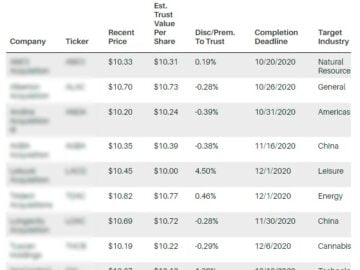Seeking out great stocks to buy is essential, but many would say it’s even more important to know which stocks to steer clear of. A losing stock can eat away at your precious long-term returns. So, figuring out which stocks to trim or get rid of is essential for proper portfolio maintenance.
Even the best gardens need pruning, and our team has spotted a few stocks that seem like prime candidates for selling or avoiding. Continue reading to find out which three stocks our team is staying away from this week.
The railroad industry is facing a number of challenges that threaten operating ratios across the entire sector, including a labor shortage, capacity constraints, and service issues. On Wednesday, the Association of American Railroads (AAR) reported a 3% year-over-year decline in weekly rail traffic, continuing a 6-week losing streak. These hefty cost headwinds will likely weigh heavily on Union Pacific Corp (UNP) and delay visions of recovery in the second half of the year.
Several analysts have downgraded UNP in recent weeks on execution concerns against a challenging macroeconomic backdrop moving into the second half of the year, including Evercore ISI analyst Jonathan Chappell. On Thursday, the analyst downgraded the stock to In-Line from Outperform, citing Q2 volume shortfalls and what he sees as a likely-to-be lower guidance reset.
Though rail equities still appear to offer relative safe-haven status, the cyclical sector is not immune to slowdowns in economic activity. UNP’s share price is down 7% over the past month. The downward momentum is likely to continue until headwinds abate.
Surging house prices have made buying a home significantly less affordable. At the same time, the Federal Reserve has signaled its intention to raise interest rates aggressively to counteract inflation. That’s driven mortgage rates above 5% — the highest they’ve been in more than a decade. These trends are beginning to weigh on demand for real estate services which could exacerbate Redfin’s (RDFN) pre-existing profitability issues.
Competition on home offers written by Redfin agents has been on the decline since February. April’s bidding war rate was 61%, down from 63% a month earlier and 67% a year earlier—as surging mortgage rates prompted buyers to drop out. The plunge in homebuyer competition is just one sign that the housing market is beginning to slow down. Online housing searches and home tours are also declining, and more sellers are lowering their asking prices.
“Most homebuyers are still encountering bidding wars, but competition is beginning to cool because surging mortgage rates and home prices are prompting some Americans to back out or put their buying plans on hold,” said Redfin Chief Economist Daryl Fairweather. “We expect bidding wars to ease further in the coming months as rising mortgage rates price more buyers out of the market.”
If housing sales slow, Redfin could struggle to integrate its recent acquisitions, such as mortgage lender Bay Equity Home Loans, which could stunt its growth and add to its profitability issues. The current consensus recommendation is to Hold RDFN. We’ll steer clear until conditions improve.
Investors got a look at the stark reality for big-box retailers last week, and it’s not pretty. Off-price apparel and home fashion chain Ross Stores (ROST) made it to our list of stocks to avoid after missing the mark for Q1 results and providing a bleak adjustment to their 2022 outlook.
Ross reported that it earned $0.97 per share from revenue of $4.33 billion, where analysts were looking for EPS of $1 and $4.53 billion in revenue. The company’s results were primarily impacted by the tough year-over-year comparisons, owing to last year’s government stimulus and pent-up consumer demand from the easing of COVID-led restrictions. Also, results were impacted by the inflationary pressures on consumers resulting from the Russia-Ukraine war. First-quarter operating margin of 10.8% was down from 14.2% in 2021, reflecting the deleveraging effect from the 7% same-store sales decline.
Barbara Rentler, Chief Executive Officer, commented, “We are disappointed with our lower-than-expected first-quarter results. Following a stronger-than-planned start early in the period, sales underperformed over the balance of the quarter. We knew fiscal 2022 would be a difficult year to predict, especially the first half when we were facing last year’s record levels of government stimulus, and significant customer pent-up demand as COVID restrictions eased. The external environment has also proven extremely challenging as the Russia-Ukraine conflict has exacerbated inflationary pressures on the consumer not seen in 40 years.”
It could be several quarters before the tides start to shift for Ross and other discount retailers. Recent data has shown that lower-income consumers are feeling the pinch from inflation more intensely than any other group. With their central demographic spending less, management cautiously adjusted the company’s forecast accordingly.
Looking ahead, Ms. Rentler commented, “Given our first-quarter results and today’s increasingly uncertain macro-economic and geopolitical environment, we believe it is prudent to adopt a more conservative outlook for the balance of the year. We are now forecasting same-store sales for the 13 weeks ending July 30, 2022, to decrease 4% to 6% on top of a very strong 15% gain in the prior-year period, with earnings per share projected to be $0.99 to $1.07 versus $1.39 in last year’s second quarter. For the 52 weeks ending January 28, 2023, we now forecast comparable store sales to decline 2% to 4% versus a 13% gain in fiscal 2021. Earnings per share for fiscal 2022 are projected to be $4.34 to $4.58 compared to $4.87 in the prior year.”
Telsey Advisory analyst Dana Telsey was one of several analysts to edit their recommendations for ROST after the call, citing execution missteps and macro headwinds for the downgrade. The company continues to face challenges across the supply chain while inflationary pressures weigh on both the company and the consumer leading to a more conservative outlook. Incremental near-term pressure is likely as Ross looks to work through elevated inventory levels. We’re keeping our distance in the meantime.













